I likely don’t need to tell you that it’s been a tough couple of weeks on the hope front. Originally, I had intended to post an essay titled, “What medieval torture devices taught me about hope” because it’s difficult to throw a stone in Scotland without hitting the site of a massacre, battlefield, or some other historical tragedy. Moving from examining long-past but brutal conflicts and their weapons to being able to look over a stunningly beautiful and peaceful landscape that was once blood-soaked gave me hope, and still does.
The humanitarian crises currently underway in the Middle East, however, cannot be minimized. Recent weeks have given us a front row seat to some of the extreme violence humanity is still capable of. It’s heartbreaking to have to face this truth. And yet, face it we must, if we are to have any hope of getting through it in a way that is part of the solution.
Activist and Buddhist scholar Joanna Macy shares two primary antidotes (she refers to them as “weapons”) to the weapons of those who threaten to destroy the world: compassion and wisdom. Compassion means, literally, to “suffer with,” to have the courage to be present in the face of the unimaginable suffering of others, to not look away, nor avoid, nor retreat or numb out. Macy describes wisdom in this case as the knowledge of interbeing: recognizing that nothing happens in this world without having an influence on the whole to which we are all connected. In her book, Coming Back to Life, she writes:
“Both are necessary. Compassion gives you the fuel, the motive force, to go where you need to go, do what you need to do. It means, essentially, to not be afraid of the pain of the world. When you are not afraid of the pain of the world, nothing can stop you.
But by itself, that weapon is not enough: it can burn you out. So you need the other, the knowledge of our interbeing.
With that wisdom you know that this not a battle between good guys and bad guys; you know that the line between good and evil runs through the landscape of every human heart. You know that we are so interwoven in the fabric of life that even the smallest act with clear intention has repercussions beyond our capacity to measure or even see.”
Balancing compassion and interbeing could be part of the reason so many people feel restored by time in or with nature, even if it’s something as domestic as a pet or houseplant. It could also be spending time in a place that feels most like home, or one which provides a feeling that you just belong there. You don’t need a reason. Some places on the planet have inexplicably special meaning for us. Others, like Jerusalem—holy land to the three major Abrahamic traditions: Islam, Judaism, and Christianity—have immense historical, cultural, and spiritual significance.
What is a sacred place?
The connection between people and place is unequivocal. We are literally of the land that feeds, clothes, and shelters us. Nature also gives us so much more than the material. Many who identify as non-religious may still have a very strong connection to nature: it’s as if nature itself is their religion.
Religion, from the Latin religio, “obligation, bond, reverence”: all three often apply to nature lovers. Therefore, etymologically, nature loving and living is perhaps more religious than some who might otherwise define themselves as “religious.” And—as I’m reminded by the mystical breadcrumbs left by the ancient inhabitants of Ireland and the British Isles—it’s most likely one of the earliest religions, too.
On a stormy day in late September at Newgrange—a 5,200 year old passage tomb built by stone age farmers just outside what is now Dublin—I stood in the dark cruciform chamber wherein a shaft of light enters on the days surrounding the winter solstice. The docents continued to remind us that we don’t really know exactly what happened here; but that it likely had ritual, ceremonial, astronomical, and spiritual importance. Standing in that place—a site surely not chosen at random—does not feel like you are standing just anywhere. For how it felt, I have no words.
In the present day, the people I’ve been getting to know in Scotland share variations on a theme of an indescribable belonging to the places they now call home.
An English housekeeper tells me she has dreamt of the Scottish Highlands ever since she was a little girl, and always wanted to live here. Her ex-husband once gave her a small picture of a croft house, turf smoke billowing from the chimney. “Take a good look at this,” he said. “Because this is the closest you’re ever going to get to that godforsaken place.” Decades on, she proved him wrong: last year she moved to Skye and her dream came true. “I don’t have words to describe it,” she says. “I just feel like I belong here; always have.” She doesn’t feel the need to dig deeper into her family’s ancestry, or go looking for a new-age religion to extract more out of that feeling. She’s happy being on Skye, knowing she made her dream of living there come true.
A crofter tells me about growing up on the Dunvegan Castle grounds, where his father and his father’s father were the estate’s gamekeepers. He left Skye in order to go to school and work, but returned as soon as he had enough money to start his own sheep herd. Peppering him with questions, I soon learn how he prepares for lambing season and the biology of the ewes that make it all work, the perceived conflicts with the protected White-tailed Eagles, and how real sheep’s wool is effectively worthless. He lives on Skye because it is where he is from, and where he feels he belongs. He grew up speaking Gaelic in the home, and is helping teach it to his grandchildren. It’s clear that the land is as a part of who he is as anything: his history, family, livelihood.
I stay with a family on the Isle of Mull who has lived here for 21 years. They take me around the island, telling me about the history and the landscape, which are intricately linked. They seem to know everyone, and if they encounter a local they don’t quite know, they figure out whom they know in common, which doesn’t take long. In this way, they find their common connection, weaving more threads of the community tapestry.
On our tour of the island, we stop so I can get a photo of some Highland cows. In the garden on the other side of the road they notice their dear friend, who drops everything to invite us in for tea. With warm hugs and kisses all around, they greet each other like very close family. Mull residents seem to have a common understanding, one in which they have a shared love of this place, its history, landscape, and people.
Over lunch, my Mull friends tell me about the Lockerbie bombing, when, in 1988, a Pan Am flight exploded over Lockerbie, Scotland. None of the passengers or crew survived, and the wreckage killed an additional 11 Lockerbie residents when it came down. Here is the part of the story that stopped my breath: when the families of the victims came to Lockerbie to claim their loved ones’ belongings, the residents had lovingly ironed and folded them and placed them back in the cases. They provided housing, meals, and grief counseling to the visitors (over 70% of the victims were Americans). They coped with their own grief by helping others cope with theirs.
Was it perhaps the very practically unnecessary nature of the ironing that made the Lockerbie community’s efforts so meaningful? They didn’t have to say it; they showed it: We are so sorry this happened. If this isn’t a shining example of Macy’s appeal to combine compassion with interbeing, I don’t know what is. And look at the result: where there had been an act of terrorism, what emerged and prevailed were love, compassion, understanding, service. Reiterating Macy: “…we are so interwoven in the fabric of life that even the smallest act with clear intention has repercussions beyond our capacity to measure or even see.” Thirty-five years later, those acts of compassion and interbeing are prompting conversations about humanity’s better moments in a little coffee shop on the Isle of Mull.
What’s love got to do with it?
Chewing on the role of love in facing crises this week, as if on cue, I came across this paper, which implores ecologists to reconsider their reductionist thinking in favor of a more holistic worldview for the sake of the biosphere. An excerpt:
“Although love is not a term widely used by ecologists or in ecological journals, the explicit and potent connection between conservation and love, between extinction and grief, is recognized as of existential importance in some recent, less fettered, humanities studies... Our training as ecologists renders us too dispassionate, too reductionist: we have become the over-regulated ‘clocks’ at the deterministic end of thinking...”
The title, To the future: An ecology of love, hope, and action, caught my eye. I rarely see the word “hope” in the title of an academic paper; let alone, “love.” The author makes many of the same arguments I have for starting Hopecology: that ecologists have a responsibility to share their knowledge in a way that effects change; that despair is completely unproductive; and that balancing the bad news with celebrating successes is important to navigating challenging times. I hope this paper signals more of the same to come: that a more integrated approach to ecology, rather than simply continuing to capitalize on and extract data from it, will benefit biodiversity.
What is a pilgrimage?
My current travels have been an intentional effort to step out of my usual modes of thinking and production mode, and into absorption, learning, and reflection mode. Two weeks ago I wrote about experiencing some frustrating minor to major inconveniences in the course of my travel to and within Britain.
The reason I’m embarking on this solo UK trip defies explanation. I just felt like I had to. I didn’t know what I would find, or where exactly I was going. The finer details only zipped together later. There have been moments—especially when things seem to be falling apart—that I wonder if I was simply delusional for undertaking this solo journey; other times, things work out so beautifully I couldn’t have planned them better if I’d tried.
The term pilgrimage is usually used to refer to the journey a traveler takes on their way to a holy destination. As I mentioned in my last essay, “holy” comes from the proto-Indo-European kohilus, meaning, “healthy” or “whole”. In my case, it could be said that the seeds for the journey to Britain were planted shortly after mid-2022, when something deeply personal appeared to have gone missing. Pilgrimages are notorious for not being what the pilgrim thinks they are. In his book, The Sacred Journey, Charles Foster describes well the concept of the journey itself being the destination:
“It is not quite true to say that the arrival is irrelevant…but although the intention is to meet with a saint at Shrine X, you’ll find that you will meet with him, and greater than him, in the slums outside the city. The meetings you thought you would have in the throne room in the center of the royal palace actually happen in a urine-drenched bus shelter. And that’s because the bus shelter is the palace.”
I just “felt like” I had to take a ferry across the Irish Sea from Ireland to Wales. But the first storm of the season meant that the sailing was delayed 5 hours, and, bitterly disappointed, I made the crossing in the dark. On the boat, in an overcrowded cabin with few open seats, I asked the most seemingly approachable person if I could sit next to him. He agreed, somewhat begrudgingly. After my seat mate finished condescendingly explaining the surprisingly confusing norms of the ferry, we ended up having an engaging conversation that lasted the entire three and a half hour journey.
I probably never would have otherwise learned so much about the British men’s fashion industry, the vindication of riding horses Western style in the English countryside, and what it’s like to have your taxes audited in the UK. It wasn’t a urine-soaked bus stop (been there plenty of times) but it was something initially sour that turned out to be more valuable than I expected.
The landscapes, the history, and the natural history of Scotland and Wales have been endlessly interesting, deeply moving, and profound. But there was never a moment where I said, “This is it: this is the place, the palace; this is why I came here.” Unexpectedly, the people have moved me just as much as the land. And why not? The people and the land are as interwoven as Harris Tweed. Not only was I here to experience a place; I also, unknowingly, came to experience a people: to learn, as I did from the Mull islanders and the Lockerbie residents, how to be a better member of the global community.




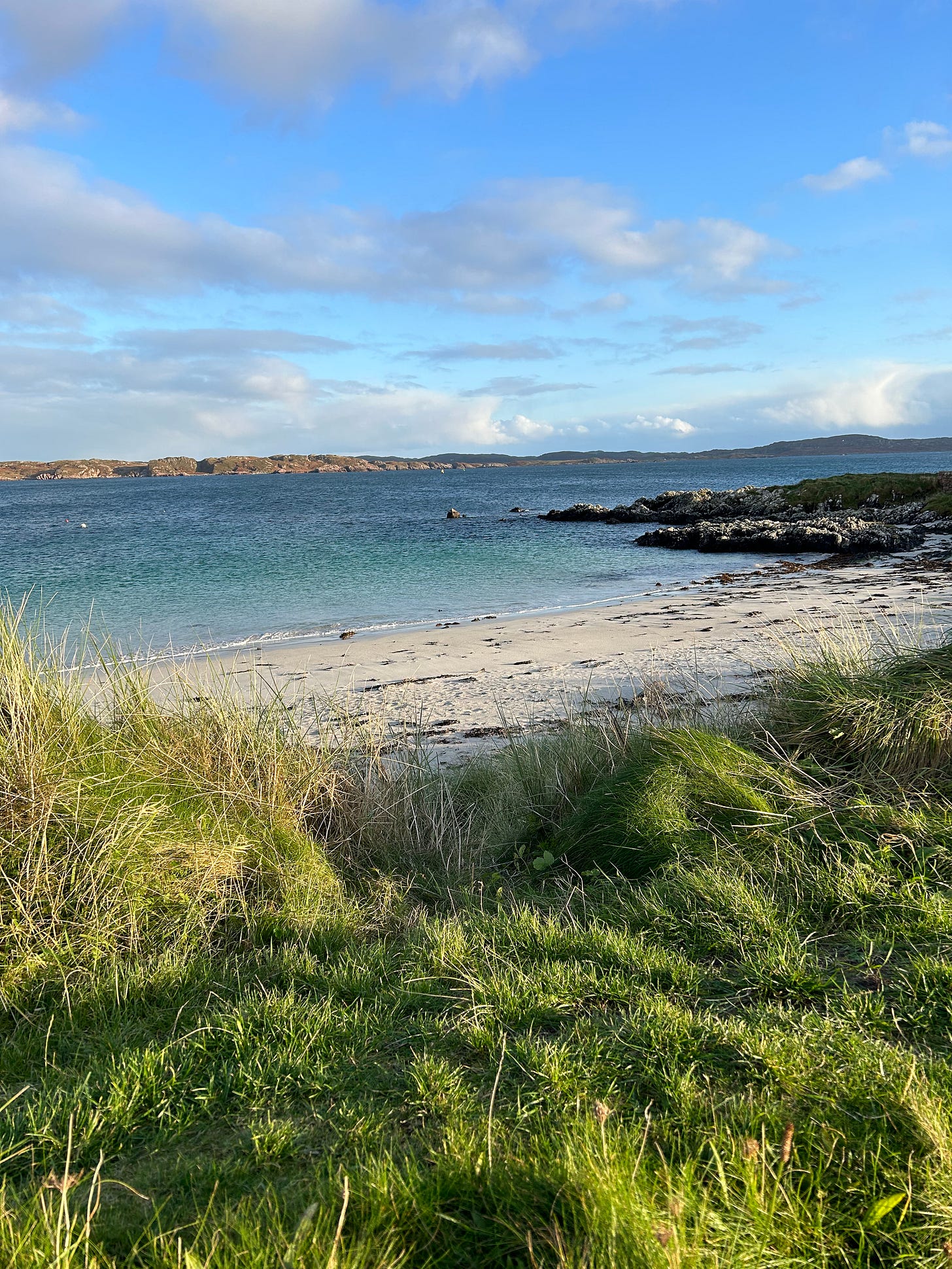
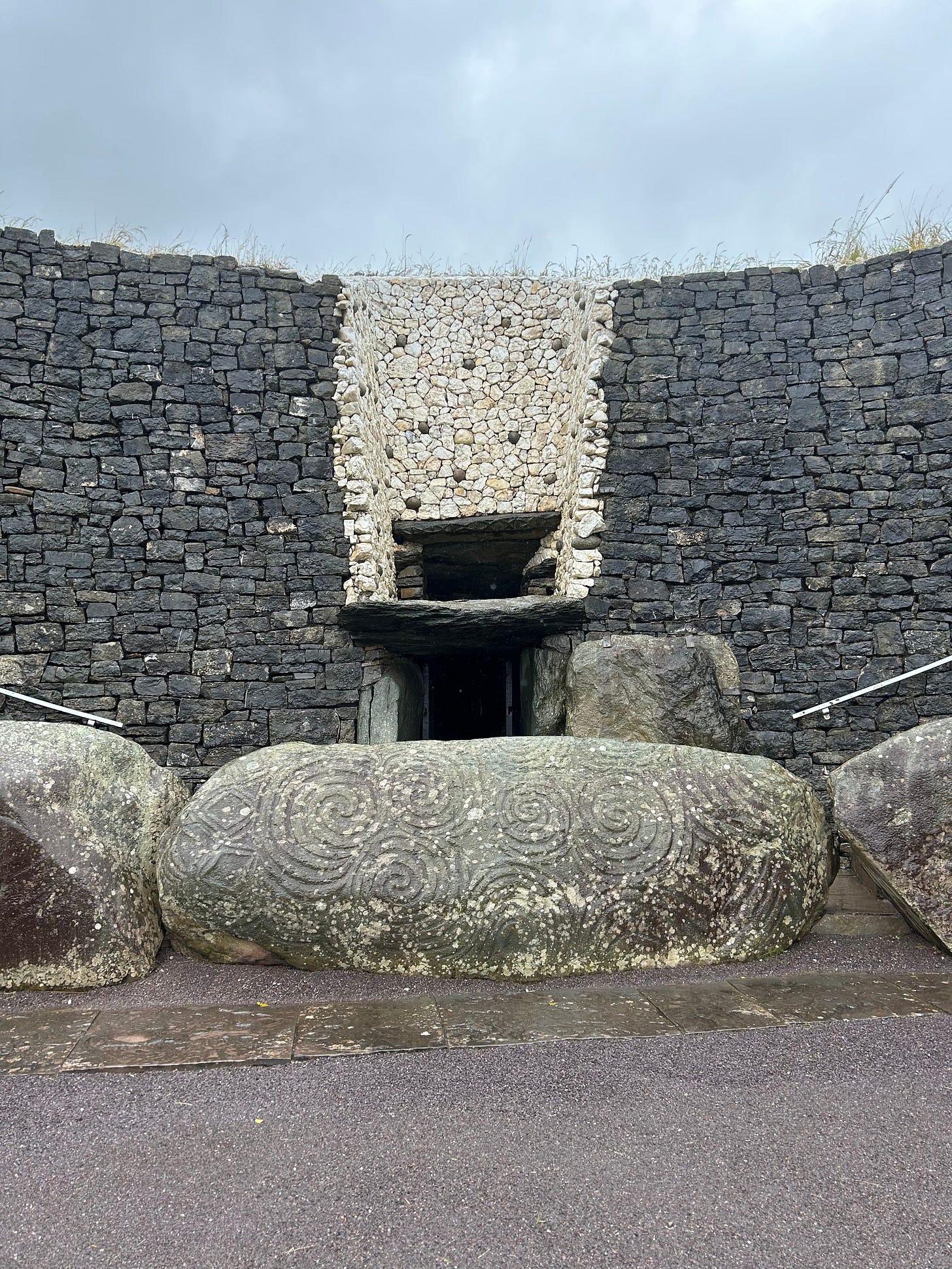

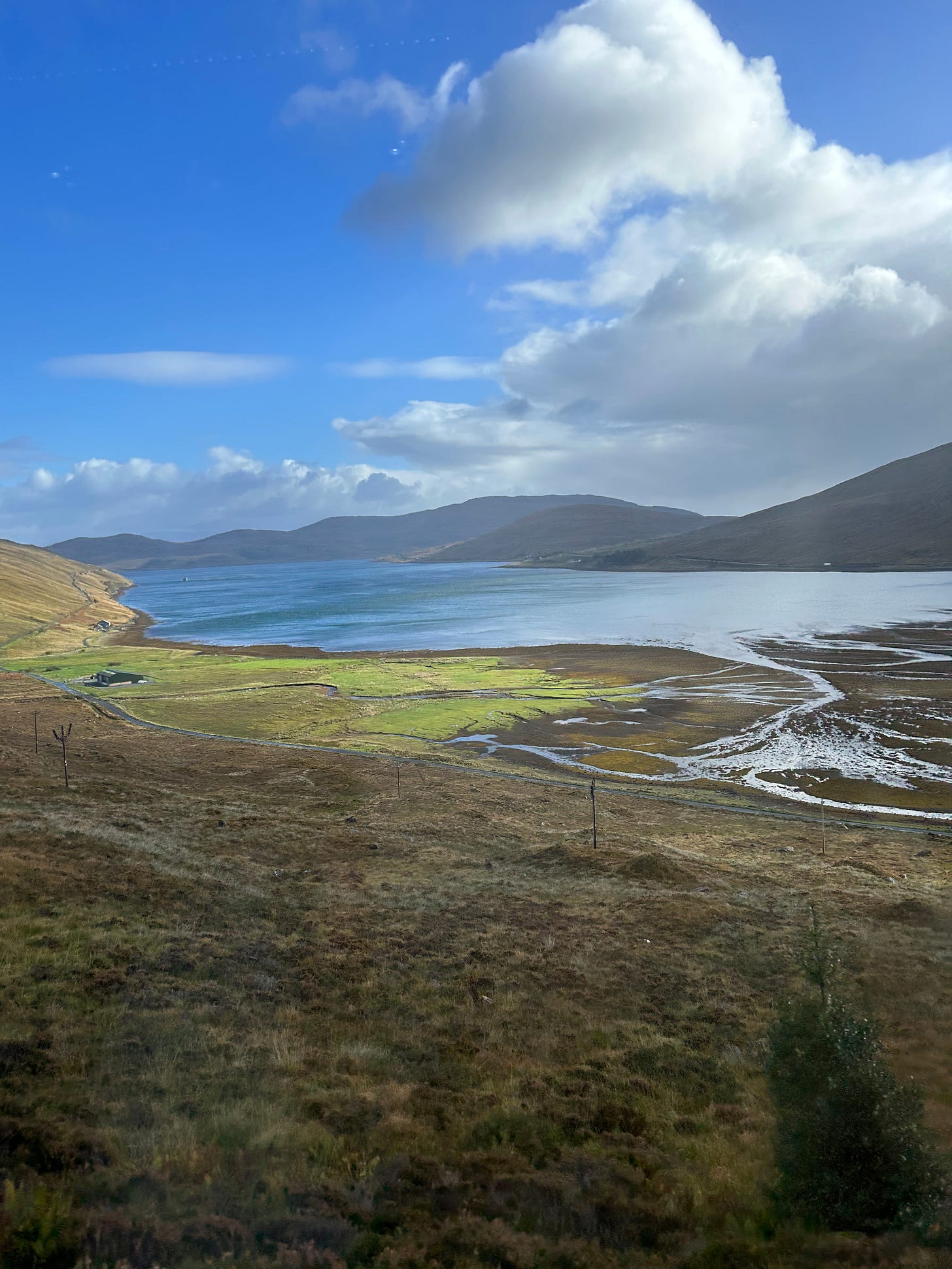
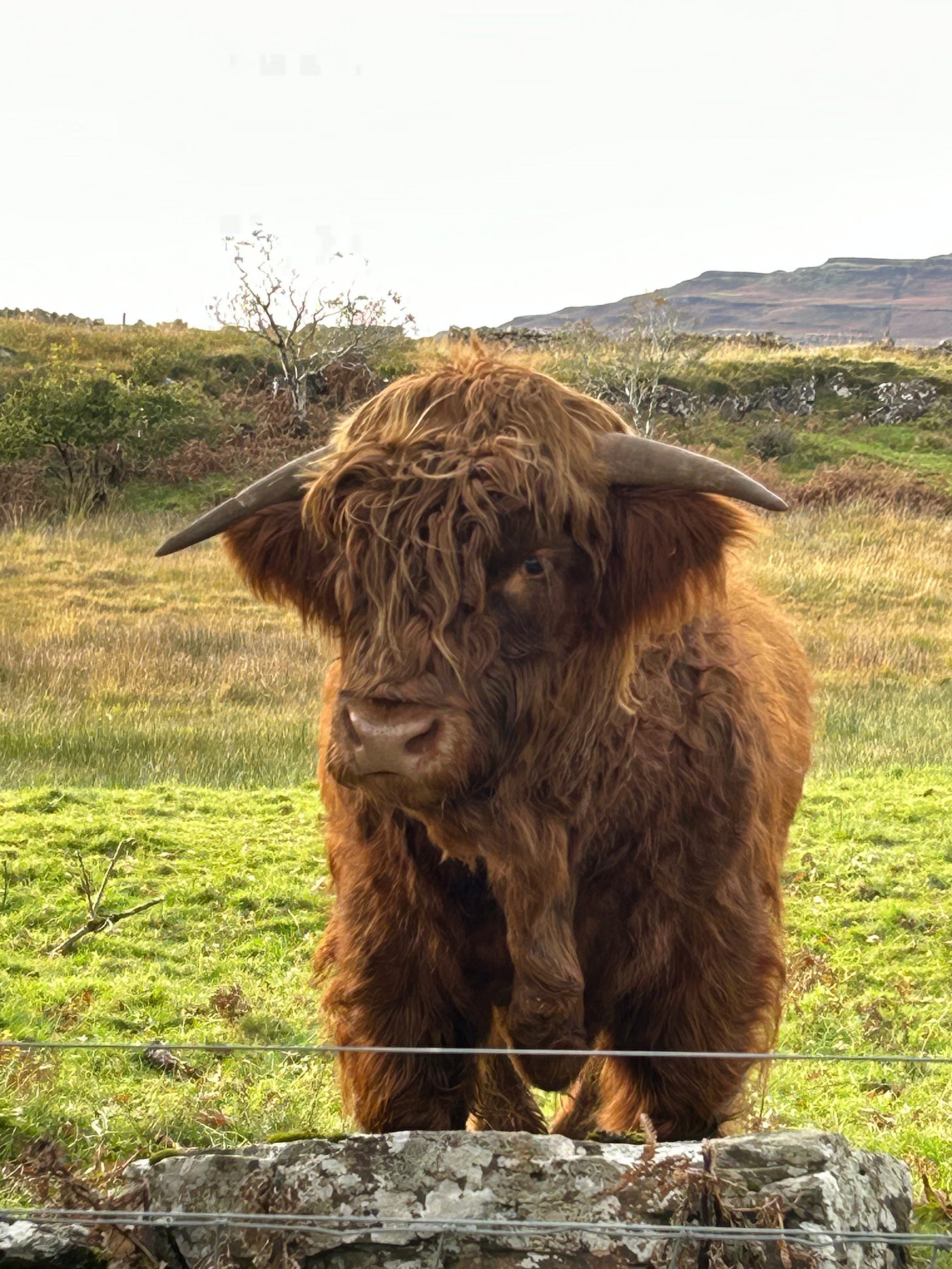
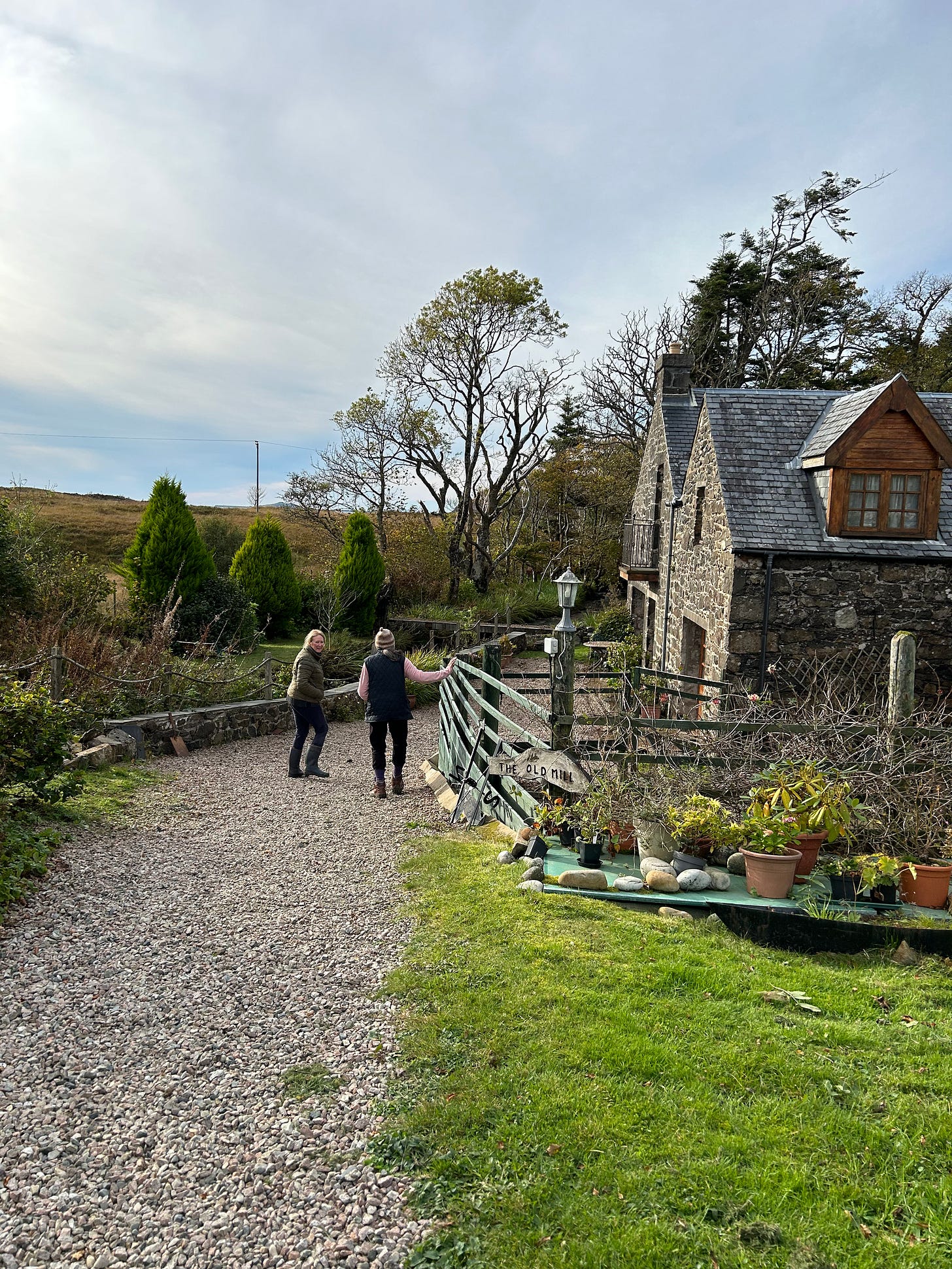
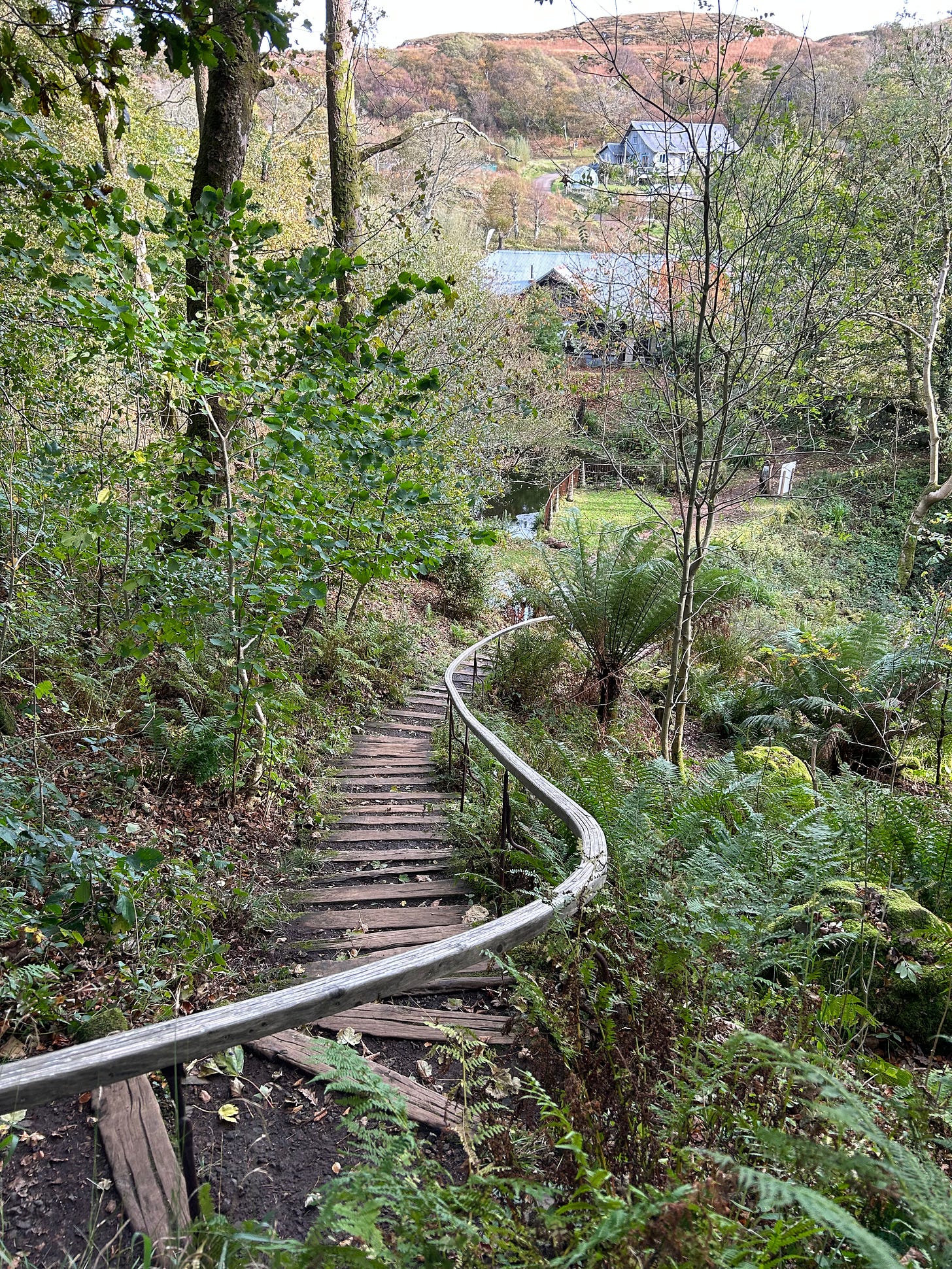

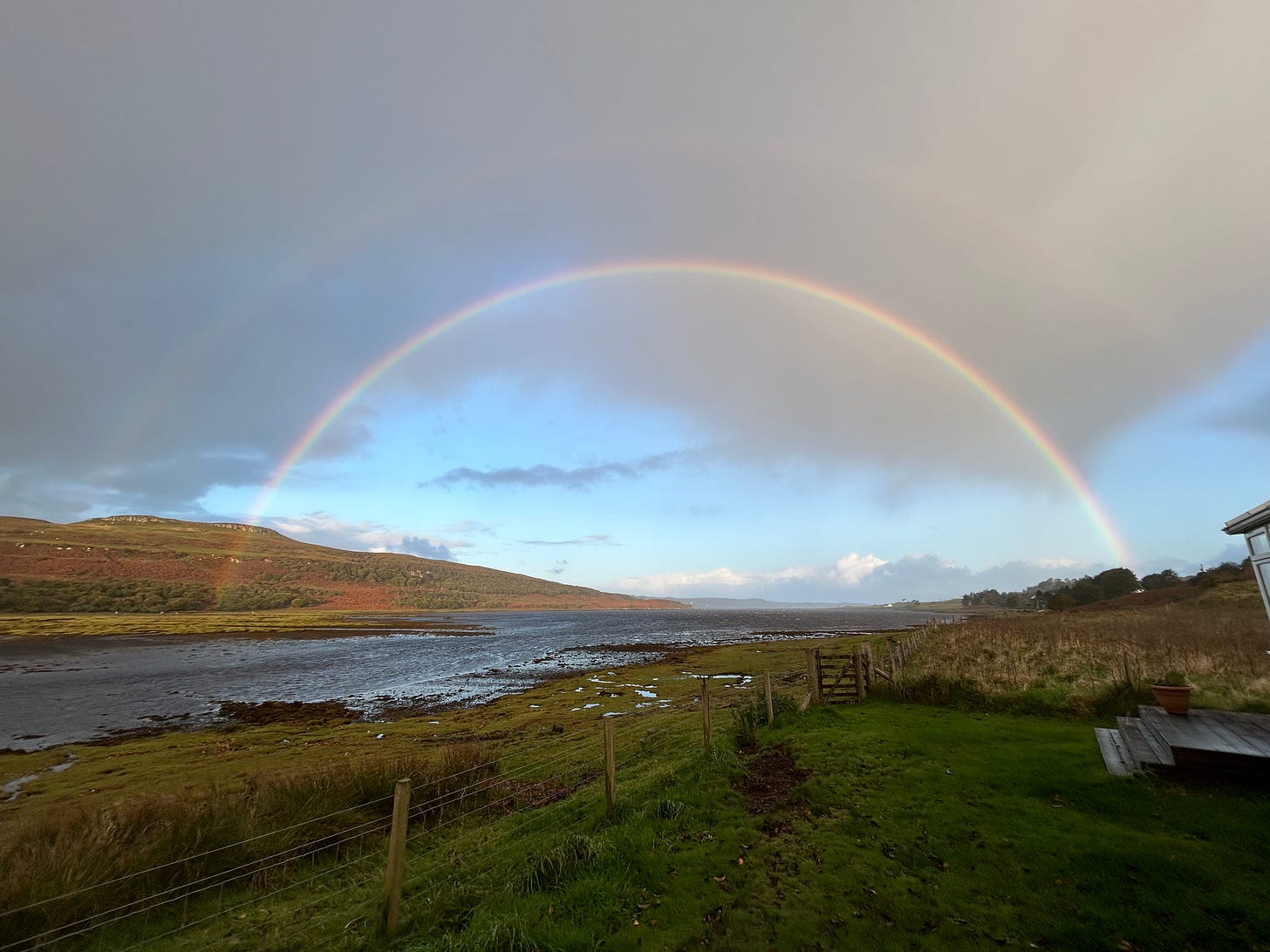
I loved everything about this essay. Very moving. Joanna Macy is a national treasure. And that Lockerbie story - I remember when it happened, but never knew how the residents responded. Marvelous.
I loved reading your very astute observations of my home country. A lot of visitors miss what goes on in Scotland but you captured a Scotland I know. I would add that a lot of the blood on those battlefields was because people had to defend that land and culture which gave their lives meaning. I don't know if you visited some of the abandoned villages on Mull - that is also a story which helps piece together our history and ties to the land. I have written a piece about it somewhere which I can dig out if you are interested.